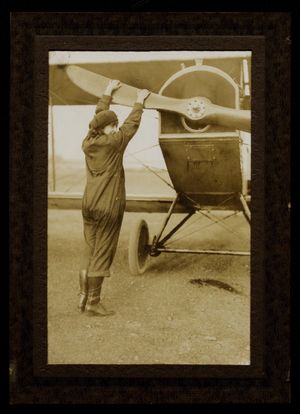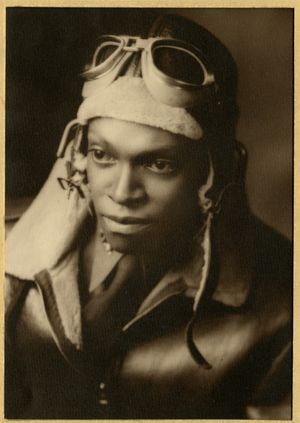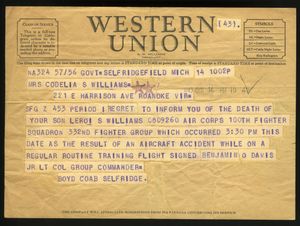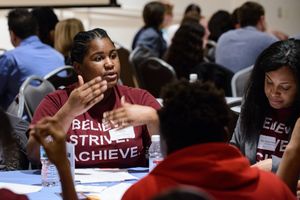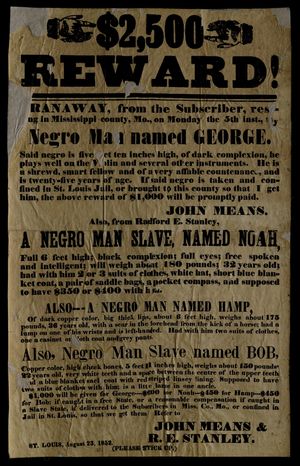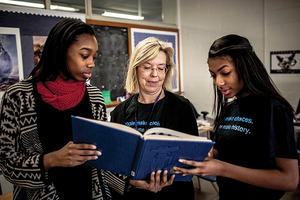edutopia
Assignments that are bigger than a lesson and smaller than a unit are a good way to experiment with inquiry-based learning.
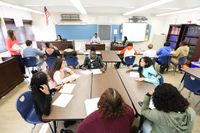
Many schools, both nationally and internationally, are adopting the College, Career, and Civic Life (C3) Framework for Social Studies State Standards. Some states, districts, and schools adopt the full framework and standards, and others adopt the general framework, but modify or create their own grade-level standards. An important element of the framework either way is something called the Inquiry Arc.
The Inquiry Arc comprises four dimensions: “one focused on questioning and inquiry; another on disciplinary knowledge and concepts relating to civics, economics, geography, and history; another on evaluating and using evidence; and a final one on communicating and taking action.” The basic idea is that students ask or are given compelling questions and then investigate those questions, evaluate and find evidence to answer them, and communicate their answers.
For example, middle school students might be given the question “Can disease change the world?” in order to spark their exploration of the Black Death. Starting with questions such as “What was the Black Death?” and “How did the Black Death affect people in the 14th century?,” they explore geography and history by examining maps and other sources.
They then write an argumentative essay to answer the original question, using the sources they examined as evidence. As an extension, they might create a public service announcement on how to assess how effective their school or community is in preventing and controlling the spread of disease.
By default, inquiry is hardwired into the C3 framework and standards: In order to effectively implement the C3, you must engage students in inquiry practices.
THE INQUIRY DESIGN MODEL FOR TASKS
The Black Death exercise is an example of an inquiry-based task that uses the Inquiry Design Model (IDM) developed by some of the key authors of the C3. They describe these tasks as “bigger than a lesson, smaller than a unit”—just right for teachers who want to implement inquiry-based learning but may not feel comfortable devoting a unit to it. IDM tasks include the following:
- A compelling question that is of interest to students and addresses issues found in one or more of the academic disciplines in social studies. It should provoke student thinking and align to curricular outcomes.
- Specific standards from the C3 framework.
- An activity to stage the question to elicit student inquiry.
- Supporting questions aligned to the compelling question. They are specific and content-based, and guide the students to be able to answer the compelling question.
- Formative assessments to check student knowledge of the content under the supporting questions. These can be short paragraphs, graphic organizers, or other traditional ways to assess student learning.
- Sources—usually primary sources—aligned to the supporting questions.
- A summative performance task that is argumentative in nature. Students must answer the compelling question using evidence to support their thinking.
- An option for students to take informed action in the world around them.
In an elementary example, students learn economics standards by investigating the compelling question “What choices do we make with our money?” They examine short readings and images, and write a short argument using these sources. They discuss the pros and cons of saving and spending, and have a chance to take informed action such as creating a poster listing ways families can save money.
There is also a version of IDM called a focused inquiry. A high school examplehas the compelling question “Did the attack on Pearl Harbor unify America?” Students answer a single supporting question and complete one performance task and then write short claim and counterclaim arguments. They then propose a revision to their textbook based on the sources explored in an extension assignment. This takes one or two class periods, versus five or six for the elementary school economics example.
WHAT ABOUT PROJECT-BASED LEARNING?
Project-based learning (PBL) is also a great way to implement the C3 framework. PBL employs inquiry and includes elements that increase engagement, such as authenticity, high-quality public products, and voice and choice.
But there may be challenges to implementing the C3 framework through PBL. Teachers may not want to transform a full unit into PBL, or the unit may not be a great fit for PBL. In any case, an inquiry-based task like IDM has many of the essential elements of PBL: It assesses key knowledge and skills, has a challenging question, and requires inquiry. It also may allow students to do more public work if they take informed action through the extension assignment. It’s also possible to have an inquiry-based task within a PBL unit, as another way to assess student learning: If students are collaborating on the final PBL product, an inquiry-based task is an effective way for teachers to assess individual students’ understanding of the content and skills in the project.
Teachers need to use their professional judgment about what makes sense for student learning as they consider PBL and smaller inquiry-based tasks. Both can increase student engagement and be used to assess deeper learning.

